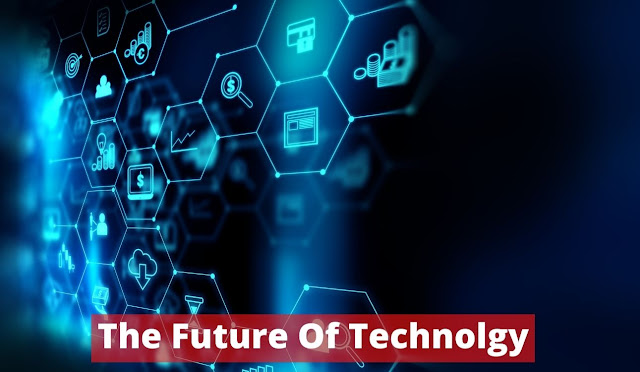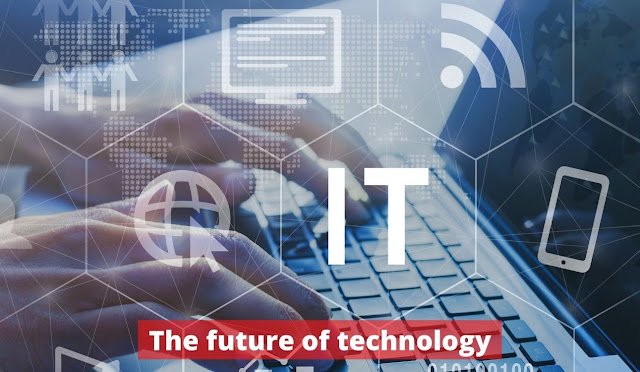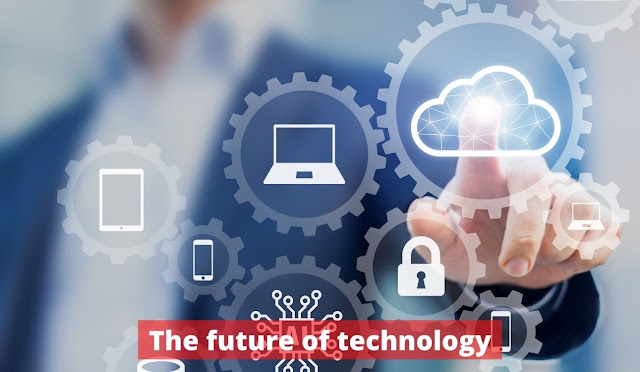The future of technology - looking forward to 2030
 |
| The future of technology |
Imagining the future of technology in the next 10 years
When mobile phones become an indispensable tool in everyone's life, we are experiencing the process of integrating technology and life. More and more technologies are affecting the development of life, and the speed and scope of the impact are also beyond the past. Now everyone can handle the big and small things in life, such as food, clothing, housing, and transportation as long as they slide their mobile phones! As technology rapidly improves our quality of life, human beings are living longer and longer, and the demographic structure is changing accordingly. The health and care needs of silver-haired people are gradually increasing. The continuous growth of the population increases the consumption of environmental resources, and slowly we overdraw the fresh air, clean water, fertile soil, food, energy, medicinal materials, etc. on the earth, accompanied by climate change, environmental pollution, and new infectious diseases. Emergence and these factors are impacting the living environment across the board. What will the future look like in 2030? How can we use new technologies to solve or reduce the challenges posed by climate and environmental change?
ITRI launches 2030 technology strategy and blueprint planning
With the theme of 2030 Science and Technology Life, ITRI envisions the future living situation and analyzes the development trend of science and technology. At present, cloud computing technology combined with 4G/5G network and artificial intelligence (AI) technology has opened up a life situation of intelligent connection. Based on this, it can be deduced that people will live in a highly connected network society in the future, integrating physical space (real space) and cyberspace (virtual space), AI artificial intelligence, Internet of Things, big data, cloud computing, and other digital technology has penetrated into every aspect of life. People enjoy a convenient and intelligent life, pursue physical and mental balance, longevity and health, and are more able to respond to the challenges of environmental changes.
In 2030, technological life needs to be achieved through technological innovation, which also means that there are many opportunities for industrial development. In order to deploy future technological research and development and lead industrial development, ITRI focuses on Smart Living and Quality Health. Three major application areas of sustainable environment and sustainable environment, describe the main scenarios of the three application areas and converge the key development directions (Directional Statement) of each area. And explore the common basic technology (ICT Enabling Technology) that supports the development of the three major application areas, and plan the 2030 technology strategy and blueprint accordingly, as shown in the figure below. Under the three major application fields, there are a total of 8 sub-field applications, including personalized devices and services, autonomous mobile systems, smart industries and services, smart medical care, health care, circular economy, smart manufacturing, green energy systems, and environmental technology. In the field of basic technology, there are four common basic technology sub-fields: artificial intelligence, semiconductor chips, communications, information security, and cloud. On the axis of this technology strategy layout, the relevant technology blueprint planning will be carried out, and the role and value of ITRI in technology guidance and assisting industrial transformation and upgrading will be brought into play.
 |
| What will the future of technology look like in 2030? |
Computer and Communications Editing Room
What will the future of technology look like in 2030? How can we use new technology to improve the convenience of life and reduce the challenges of environmental change? With the theme of 2030 Science and Technology Life, ITRI envisions the future life situation, analyzes the development trend of science and technology, focuses on the three application fields of Smart Living, Quality Health and Sustainable Environment, and describes the main Based on the application scenario, the key development direction (Directional Statement) is converged, and based on this, the common basic technology (ICT Enabling Technology) that supports the development of the three application fields is explored, and the 2030 technology strategy and blueprint are developed. Information and communication technology is a common basic technology that supports the digital transformation and development of society. The key areas include AI, chips, communications, and information security. This article will briefly explain the AI future of technology development plan in the 2030 technology strategy and blueprint.
In the future, people will live in a highly connected network society. People will enjoy a convenient and intelligent life, pursue physical and mental balance, longevity, and health, and be more able to respond to the challenges of environmental changes.
Common basic technology (ICT Enabling Technology) supporting application fields
 |
| The future of technology |
The common basic technology (ICT Enabling Technology) focuses on the development of intelligent common technologies that can support the three major application fields at the same time and shows the value of innovative systems and application services with application requirements. , including the use of high-efficiency AI artificial intelligence capabilities (including algorithms and computing power) for prediction and decision-making, through the Internet of Everything (IoT + Communications) and information security technology, to build a highly connected, safe, and trustworthy network society. These key technologies will be implemented in life through artificial intelligence, semiconductor chips, communications, information security, and cloud computing products. In line with the theme of this issue of smart services, this article will focus on introducing the development plans related to AI technology in the 2030 technology strategy and blueprint.
AI artificial intelligence technology development plan
Artificial intelligence is a science that studies and develops theories, methods, technologies, and application systems for simulating, extending, and expanding human intelligence. Since AI is a general technology, it can be applied in various fields, driving the evolution of technologies, products, industries, formats, and business models, and will bring about major changes in the economy and industrial structure. According to the McKinsey Global Institute, AI is facilitating a transformation in human society that "will happen 10 times faster, 300 times larger, and almost 3,000 times larger than the Industrial Revolution." At this stage, artificial intelligence technology and applications are rapidly evolving. For example, the application of artificial intelligence to image recognition and speech recognition has led to new products and services. Chatbots have become helpers for product marketing, online customer service, and order collection. Face recognition and image recognition make access control and parking management more convenient.
The government attaches great importance to the development of artificial intelligence technology. The Executive Yuan launched the "Taiwan AI Action Plan" in early 2018. With Taiwan's existing ICT advantages, it combines R&D talents, ICT and semiconductor industries, open fields and data, etc., to integrate relevant government plans. Painting and industrial resources, linking the energy of international partners, and driving Taiwan's intellectual revolution. In terms of policy, it actively attracts international flagship companies to set up AI R&D centers, links with Taiwan's local AI industry promotes the participation of small and medium-sized enterprises, improves the development of AI applications, and drives my country to a new stage of future economic development. After this period of the promotion, enterprises have gradually become familiar with the benefits that AI can bring, but enterprises still face difficulties in introducing AI technology. Therefore, in the 2030 technology strategy and blueprint planning, the sub-field of AI artificial intelligence technology is very important. The four key challenges that quasi-enterprises need to solve when introducing AI include automation of large-scale DNN training, insufficient training data, interpretable AI inference results, and information security protection of AI models (Know-how). Technological development focuses on developing high-efficiency and highly interpretable AI algorithms to enhance the willingness of enterprises to introduce artificial intelligence technology and applications; research and development of AI data and model protection technologies to solve enterprises/individuals' concerns about data security and privacy. After analysis, three main axes of AI technology development are summarized, including machine learning hyper automation and training data minimization technology, explainable AI technology, and AI model security technology.
 |
| The future of technology |
Hyper automation of machine learning and training data minimization technology
Designing or finding a suitable neural network architecture model from thousands of possible models is time-consuming, not to mention having to iteratively tune hyperparameters that affect model performance. The development plan of the super-automation of machine learning and the minimization of training data technology will focus on the establishment of an AI/Deep Neural Networks (DNN) automation platform in the vertical field, and provide automation tools to complete the AI application development process. Intelligent robot automation process (iRPA) tools applied in different fields to automatically perform repetitive tasks in the process of AI model building; reduce the collection and preparation of AI training data through transfer learning or data generation methods. Overall, the key technical focuses of the hyper automation and training data minimization axis of machine learning will include: optimized hyperparameter search, optimized network architecture generation, meta-learning/enhanced meta-learning, transfer learning, semi- Projects such as supervised learning, intelligent training data augmentation, and minimal data learning.
Explainable AI technology
The most popular AI technology in recent years is deep learning technology, but how the deep learning model makes decisions has always been a difficult question to answer. However, in order to implement AI technology into more application fields, especially projects related to major issues in life, such as medical diagnosis, financial insurance, judicial investigation, etc., it will be more urgent to know how the model draws conclusions. , so that in practical applications, it can help people judge when to let the machine handle and when to intervene. The development plan of the interpretable AI technology axis will focus on the ability to extract symbolic rules from the DNN model to build a model that is understandable and trustworthy; it can also build a priori symbolic rules into the DNN model before training to integrate User domain knowledge provides structured information that is closer to human understanding. Key technical highlights include machine-interpretable models, human-computer interactive learning algorithms, knowledge graph construction, and inference, AI models embedded in knowledge graphs, dynamic knowledge graphs, and other projects.
AI model safety technology
Sopho sLabs, the global security research center of Sophos, a world-renowned information security solution provider, has been conducting long-term research on global security risks. In its 2020 Information Security Threat Report, it pointed out that artificial intelligence (AI) will become the information Safe new battlefield. While the industry widely uses AI to improve efficiency, it must also pay attention to how to defend information systems and services centered on AI models. For example, when an AI system is injected with maliciously sent fake facial recognition images, the AI model misclassifies it and the perpetrator escapes detection. On the other hand, AI models themselves are valuable intellectual property and must be protected from disclosure and misuse. In response to such emerging AI information security issues, the development plan of the AI model security technology axis will focus on building a reliable and fault-tolerant AI application system, an AI model that is safe from attack threats, and self-aware Protect AI models/applications from infringement. Key technical highlights include: adjustable adversarial sample generation, adversarial sample defense, AI attack defense and fault tolerance evaluation system, differential privacy, edge/device data differential privacy, edge/device data AI random response, AI model coding/parameter obfuscation, AI Model watermarking, traceable AI model protection and other projects.












No comments:
Post a Comment